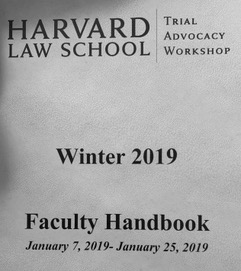Second Suspect In Custody For 2017 Slaying

Over a year after they arrested one suspect, NYPD officers arrested another man for his role in the 2017 death of Robert D’Onofrio.
Twenty-seven year-old Abaise Brabam, of Marietta, Ga., was arrested and charged with murder and several other criminal counts. Police speculate that Mr. Brabam and his accomplice, 27-year-old Derek Simpkins, surprised Mr. D’Onofrio during a robbery and shot him. Both suspects are being held without bail.
Shortly before the killing, Mr. D’Onofrio, who was a civilian steampipe fitter, obtained a $650,000 judgement against the NYPD stemming from a wrongful discharge suit.
Criminal Investigations vs. Criminal Prosecutions
Generally, officers only need probable cause to arrest defendants. Courts have never really defined exactly what “probable cause” means. However, we know that it is somewhere between reasonable suspicion, which is a few facts along with the officer’s “gut feeling,” and beyond a reasonable doubt. New York has a not-very-helpful definition of reasonable doubt, which is “proof that leaves you so firmly convinced of the defendant’s guilt that you have no reasonable doubt of the existence of any element of the crime or of the defendant’s identity as the person who committed the crime.”
In plain English, reasonable doubt means evidence of such an overwhelming character that there is no probable explanation for the events other than the prosecutor’s version. For example, in a murder case, it’s possible that space aliens from Mars could have killed the defendant. But that’s clearly not a reasonable alternative to the prosecutor’s version of events.
The biggest difference between probable cause and reasonable suspicion is the presumption of innocence. Once police officers start to zero in on suspects, they essentially presume that these people are guilty. The opposite is true in criminal court. The prosecutor must not simply start over. Essentially, there is a presumption that the defendant is wrongfully accused. So, prosecutors must work very hard to overcome this presumption.
The presumption of innocence is so strong that the defense need not present any evidence of its own, or challenge any of the state’s evidence, to obtain a not-guilty verdict. I hardly ever use that strategy, but it illustrates the power of the presumption of innocence.
Types of Homicide in New York
Once law enforcement makes an arrest in a murder or any other case, the prosecutor must decide what charges to press in court. New York prosecutors are quite aggressive. They usually bring the most serious charges that the facts could possibly support. For this reason alone, it’s almost always a good idea to challenge the state’s evidence to the greatest degree possible.
There are basically four types of murder in New York:
- First Degree Murder: These killings involve aggravated circumstances. That could be premeditation or it could be based on the victim’s status as a police officer, judge, or other important official.
- Second Degree Murder: Most intentional killings cases are second degree murder cases. The prosecutor must establish a connection between the defendant and the killing by either direct or circumstantial evidence.
- First Degree Manslaughter: In murder cases, the victim must normally intend to cause death or serious bodily injury. That’s not the case with manslaughter, which is an unintentional killing. Most fatal alcohol-related car crashes are manslaughter cases. Legally, intoxicated people cannot form the intent to murder someone.
- Second Degree Manslaughter: First degree manslaughter usually involves reckless conduct, like a drunk driving crash. Second degree manslaughter typically involves negligent acts, such as a defendant who pushes a victim down who then hits his head on a rock.
The felony murder rule often comes into play in these cases. That’s probably the doctrine at issue in the Robert D’Onofrio killing. If a defendant is involved in a serious felony, like burglary, that defendant can also be charged with murder. For example, if a convenience store robbery goes sideways, the guy who drives the getaway car or watches the street corner is also guilty of murder, even if his participation was severely limited.
Resource:
nydailynews.com/new-york/nyc-crime/ny-men-arrested-murder-nypd-steamfitter-brooklyn-20180721-story.html












